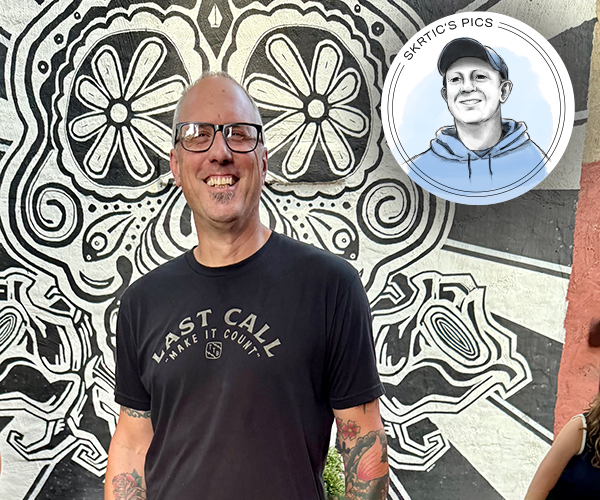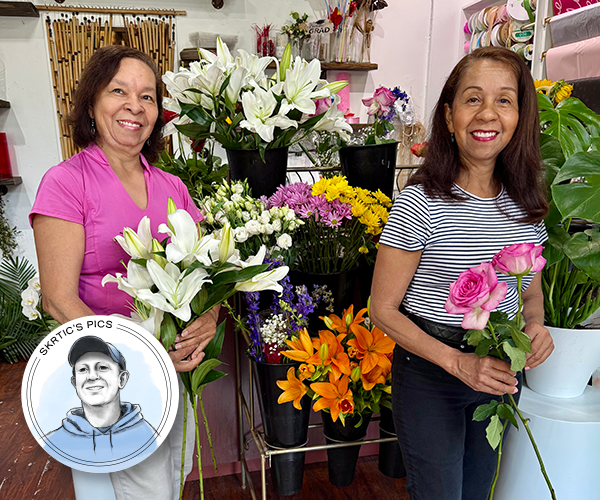A jug of Elmer's Glue-All, some cheap utility knives and a bunch of scrap cardboard boxes from the local grocery store or a neighbor's trash — most days, that's just about all Mark Langan needs to make art with the kind of visual complexity that transcends its simple beginnings.
Langan didn't invent corrugated box art, a style named for that cardboard with the wavy layers built in, but he's certainly mastered it. With the precision of a surgeon, he deconstructs then reassembles cardboard into patterns ranging from rolling waves to blueprint-perfect lettering. He even manages to slice delicate motifs into the cardboard's uppermost layer and remove it, revealing the depth of the grooves below.
The result is eye-fooling 3-D patterns with no lame glasses required. He started experimenting with the art form in 2004 after being laid off from his 25-year career in the transportation industry. Art had remained a hobby for this Brunswick Hills-based father of two — mostly pencil drawings and wood sculpture — since his days studying commercial art at Polaris Career Center in high school.
"My wife said, • Take this layoff and see what the heck you want to do,' " Langan says. "So I started to try to do something with my art."
After some of his friends moved, Langan asked for their old boxes so he could experiment. He fashioned them into an abstract piece of wall art made up of undulating waves of corrugation and named it Max and Lori's Move.
Langan's friends bought the piece for $300, and his career as an artist was born. Since then, he's found steady work creating renderings of logos for corporations in the paper, recycling and packaging industries, among others. But he's also created stunning pieces of contemporary art that have found homes in private residences, corporate collections and galleries.
Although his lines are always precise and his cut marks flawless, Langan typically leaves his work in standard cardboard brown and often allows the printed parts of the cardboard, whether it's a barcode or a corporate logo, to become part of the work.
"I want to celebrate what it is," he says. "It's a box."
For his latest piece, a reinterpretation of Andy Warhol's famous Campbell's soup can, Langan convinced his local Buehler's grocery store to save all of its Campbell's boxes for him. He's solely using Campbell's-branded cardboard to construct the piece.
Appropriately, Langan has found a legion of raving fans that appreciate the eco-friendly nature of his work. He shrugs off the label of "green" artist — too cliched, he says — but he has found a niche for his work with eco-themed events and companies. He was a featured artist in the eco-art exhibit at Cleveland City Hall in 2008, and his rendering of Uncle Sam demanding "I want you to recycle" landed on the cover of CTN Green magazine last year.
Actor David Arquette even commissioned Langan to create a corrugated version of the logo for his and rocker Ben Harper's new organic clothing line, propr.
Although using basic materials rescued from the trash can next door is more about his own enjoyment than saving the Earth, Langan says over time he has embraced his role in the three Rs. "I do think differently about my trash now," he says. "Am I really putting a dent in the landfill with my art? No. But it inspires people."



